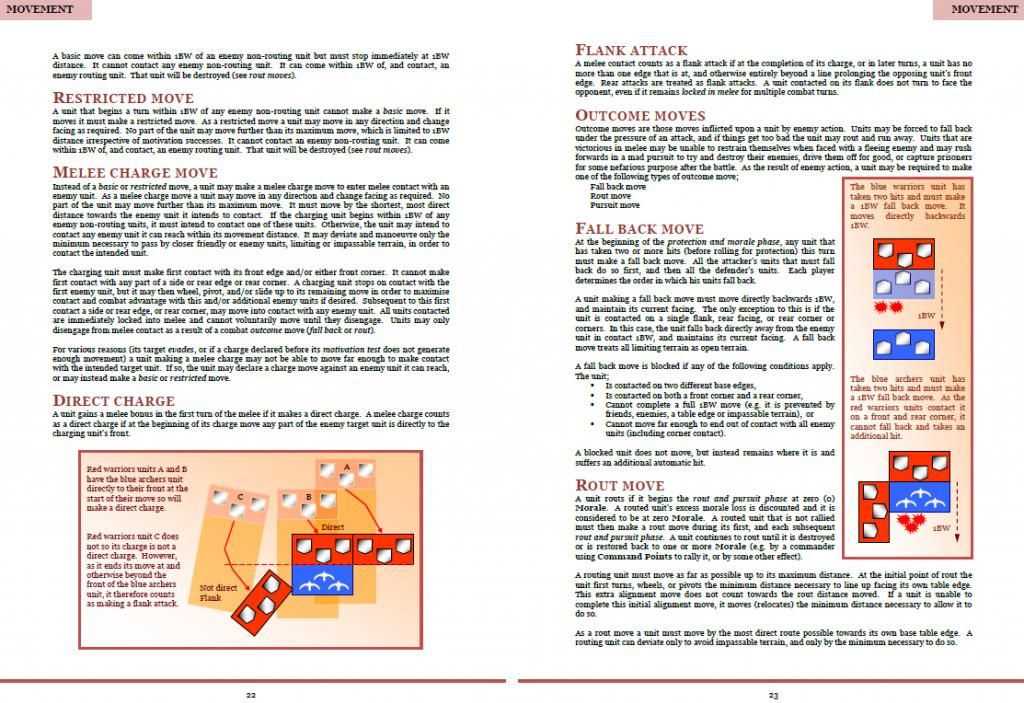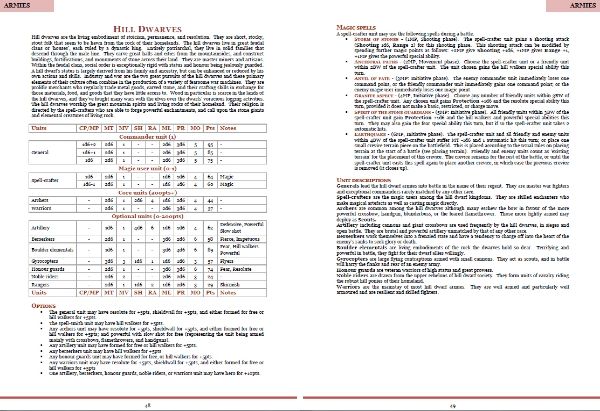In Warband a turn represents 'everything that happens in the battle over 30 minutes'. A turn will play out generally as follows:
1. Initiative and command/magic potential is generated.
Command points are used to add dice to dice rolls/magic points are used to cast and boost spells (each army has its own spell list)
2. Everything moves (or not)
Movement must be diced for to to determine whether, and how far, a unit may move. E.g. Hill dwarf warriors have 'motivation 2d6, move 1' so for every success (4+ on the dice) it moves 1. Movement is highly flexible but there are restrictions for charging into melee or moving when close to an enemy.
3. Everything shoots (or not), and 'hits' are marked.
Shooting lanes are quite narrow but you can shoot at anything in range, not just the closest unit). Shooting is done by dice pools of d6s, and hit on 4+.
4. Everything melee fights (or not), and 'hits' are marked.
Melee is done by dice pools of d6s, and hit on 4+.
5. Everything resolves the outcomes of accrued hits (including protection from the hits, morale loss, and outcomes.
Protection is done by dice pools od d6s, and on 4+ removes 1 hit. Remaining hits reduce morale until the unit breaks.
Command and magic can interact to affect each phase, typically by adding dice to dice pools, or for magic, giving units special abilities.
It means that as a player you need to make careful decisions about where to spend your limited command influence (or magic spells). Do you blow it all early to get your units moved into good positions, use it in the fighting to damage your opponent's units, or save it to help protect and rally your own units?
The turn structure means that there will be a lot of uncertainty; you'll have to constantly make challenging choices, and the wisdom of those choices won't become clear until the end of each turn!
Some example text:

